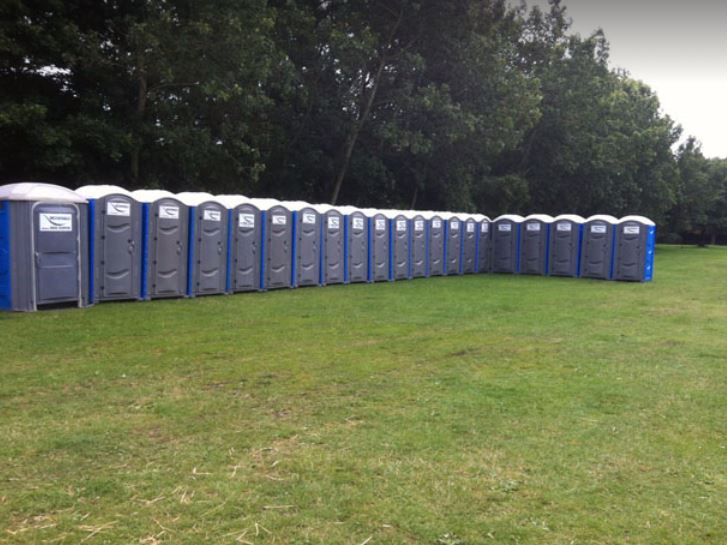It is believed that runners generally have complex interaction and relationships with portable toilet units. Runners tend to value and appreciate these mobile toilets before, during and after a given race. These facilities enhance a runner’s performance as they provide a quick and accessible outlet to expel all the excess liquid, gels and bars consumed during the run.
The different ways portable toilets could be configured or placed during a marathon
In most running events, the race director or management determine how the portable toilets are situated. Portable toilet hire companies can provide guidance to the event organisers on the most suitable way to set or station the units.
Line formation: Space limitations at some running routes could lead race organisers to have all the portable toilet units arranged in a single line. It is argued that the line arrangement is most suitable for narrow streets with thousands of race participants. On the other hand, there are a few drawbacks like confusion with the queuing system as it is likely that individuals could end up not standing in a single and orderly file. It also tends to lead to the easy build up of crowd and could easily delay the start of some races. Regardless of the negatives, having a line formation can easily enhance the portable toilet to runners’ ratio in events that have restricted space but huge participants.
U-shape formation:This is also a good option to the placement of portable toilets at running events. The U-shape is more appropriate at events with more space. A U-shape also provides runners with an option of more toilets at a given time than a line shaped arrangement. The challenge of crowd build up is less evident with a U-shape configuration. Overall, you could easily say this form of toilet placement will ensure that a more positive toilet to participant ratio is achieved
Separation formation: This is also an effective way of accommodating and arranging portable toilets at race events and is an extension of the U-shaped model. It is recommended that clusters of about 10 toilets should be separated by about a 20-foot space to prevent any drama. With this arrangement, race organisers can instruct participants to form one queue per bank of cluster of toilets than a queue per unit. The benefit of putting this strategy in place is that a faulty unit will not disrupt the flow of queue at the respective bank. This will help speed up the queue process and ensure runners feel less stressed as they queue up to answer a number one or two.
The way portable toilets are placed during race events is very important to ensure queues are effectively managed with little or no chaos and so runners leave with a positive experience. We also saw that several factors such as the number of participants, quantity of portable toilet units hired and the available space at the race location determines the placement of these units. At WC Portable, our immense experience in providing toilets for running events affords us the opportunity to advise event organisers on the most suitable toilet formation at a given race.




